توضیحات محصول
کیت استخراج RNA از خون|Blood RNA isolation kit
مناسب جهت استخراج RNA خون و سرم با کیفیت و خلوص بالای RNA استخراج شده
RERNAKIA
High Pure Blood RNA extraction kit
Cat. No:
FPKT032.0025
FPKT032.0050
FPKT032.0100
Contents:
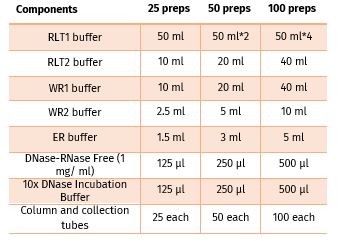
Kit storage:
 This kit should be stored at room temperature.
This kit should be stored at room temperature.
 DNase should be stored at -20 °C
DNase should be stored at -20 °C
 If properly stored, all kit components are stable until the expiration date printed on the label.
If properly stored, all kit components are stable until the expiration date printed on the label.
Additional Equipment and Reagent required
- Make sure everything is RNase-free when handling RNA.
- Absolute ethanol
- ß-Mercaptoethanol
- Standard tabletop microcentrifuge capable of 13,000 x g centrifugal force
- Microcentrifuge tubes, 1.5 ml, sterile
- liquid nitrogen & mortar
Application
The High Pure RNA Isolation Kit is designed to extract RNA from blood samples. The RNA can then be used for downstream applications such as gene expression analysis, qPCR, microarray analysis, and next-generation sequencing.
The general steps involved in using a blood RNA isolation kit include:
- Collect the blood sample using standard venipuncture techniques and transfer it into a collection tube containing a stabilizing reagent.
- Centrifuge the collection tube to separate the blood cells from the plasma or serum.
- Transfer the plasma or serum to a fresh tube and add a lysis buffer to the sample to lyse any remaining red blood cells and release the RNA.
- Transfer the lysate to a spin column and centrifuge it to remove any cellular debris.
- Wash the spin column with a wash buffer to remove any impurities.
- Elute the RNA from the spin column with an elution buffer.
It is important to follow the instructions carefully to ensure that the RNA isolation is successful and that the resulting RNA is of high quality. The procedure is optimized to achieve reliable results within Approximately 1 hour (24 samples simultaneously).
Handling Requirements and Safety Information
 All solutions are clear and should not be used when precipitates have formed. Warm the solutions at +15 to +25°C or in a 37°C water bath until the precipitates have dissolved.
All solutions are clear and should not be used when precipitates have formed. Warm the solutions at +15 to +25°C or in a 37°C water bath until the precipitates have dissolved.
 RLT2 Buffer and WR1 Buffer contain guanidinium hydrochloride which is an irritant.
RLT2 Buffer and WR1 Buffer contain guanidinium hydrochloride which is an irritant.
 ß-Mercaptoethanol (ß-Me) is hazardous to human health. perform the procedures involving ß-Me in a chemical fume hood.
ß-Mercaptoethanol (ß-Me) is hazardous to human health. perform the procedures involving ß-Me in a chemical fume hood.
 Do not allow RLT2 Buffer and WR1 Buffer to touch your skin, eyes, or mucous membranes. If contact does occur, wash the affected area immediately with large amounts of water.
Do not allow RLT2 Buffer and WR1 Buffer to touch your skin, eyes, or mucous membranes. If contact does occur, wash the affected area immediately with large amounts of water.
 If you spill the reagent, dilute the spill with water before wiping it up.
If you spill the reagent, dilute the spill with water before wiping it up.
 Do not use any modified ethanol.
Do not use any modified ethanol.
 Do not pool reagents from different lot numbers.
Do not pool reagents from different lot numbers.
 Immediately after usage, close all bottles to avoid leakage, varying buffer concentrations, or buffer conditions.
Immediately after usage, close all bottles to avoid leakage, varying buffer concentrations, or buffer conditions.
 After first opening store all bottles in an upright position.
After first opening store all bottles in an upright position.
 Do not allow the RLT2 Buffer and WR1 Buffer to mix with sodium hypochlorite found in commercial bleach solutions. This mixture can produce highly toxic gas.
Do not allow the RLT2 Buffer and WR1 Buffer to mix with sodium hypochlorite found in commercial bleach solutions. This mixture can produce highly toxic gas.
 Wear protective disposable gloves, laboratory coats, and eye protection, when handling samples and kit reagents.
Wear protective disposable gloves, laboratory coats, and eye protection, when handling samples and kit reagents.
 Do not contaminate the reagents with bacteria, viruses, or nucleases. Use disposable pipets and nuclease-free pipet tips to remove aliquots from reagent bottles.
Do not contaminate the reagents with bacteria, viruses, or nucleases. Use disposable pipets and nuclease-free pipet tips to remove aliquots from reagent bottles.
preparation procedure:
Working Solution Preparation
FPKT032.0025-25 prep
 Add 2.5 ml of absolute ethanol to WR1 Bottle.
Add 2.5 ml of absolute ethanol to WR1 Bottle.
 Add 10 ml of absolute ethanol to WR2 Bottle.
Add 10 ml of absolute ethanol to WR2 Bottle.
FPKT032.0050-50 prep
 Add 5 ml of absolute ethanol to WR1 Bottle
Add 5 ml of absolute ethanol to WR1 Bottle
 Add 20 ml of absolute ethanol to WR2 Bottle
Add 20 ml of absolute ethanol to WR2 Bottle
FPKT032.0100-100 prep
 Add 10 ml of absolute ethanol to WR1 Bottle.
Add 10 ml of absolute ethanol to WR1 Bottle.
 Add 40 ml of absolute ethanol to WR2 Bottle.
Add 40 ml of absolute ethanol to WR2 Bottle.
 Please note that the Ethanol concentration of a Washing Buffer may decrease during long-term storage resulting in a drop-down of the final RNA yield.
Please note that the Ethanol concentration of a Washing Buffer may decrease during long-term storage resulting in a drop-down of the final RNA yield.
 before starting Incubate the ER buffer at 55 to 65 ° C until the end of the protocol to obtain the maximum yields.
before starting Incubate the ER buffer at 55 to 65 ° C until the end of the protocol to obtain the maximum yields.
Protocol
- Add 1 ml RLT1 Buffer to the 2 ml microtube and add 500 μl Blood sample. Mix gently (don’t Vortex) and centrifuge at maximum speed for 1 minute.
- Discard the supernatant and add 1ml RLT1 Buffer again. Mix gently (don’t Vortex) and centrifuge at maximum speed for 1 minute.
- Discard the supernatant and Add 400 μl RLT2 Buffer and 3.5 μl of ß-Mercaptoethanol and Vortex vigorously for 1 min to resuspend the cells completely. Incubate at room temperature for 5 min.
- Add 600 μl Absolute ethanol to the homogenized lysate, and mix well by pipetting.
 If the clump is still visible after the vortex, pipet the sample mixture up and down to break down the clump.
If the clump is still visible after the vortex, pipet the sample mixture up and down to break down the clump.
- To transfer the sample to a High Pure Filter Tube:
-Insert one High Filter Tube in one Collection Tube.
-Pipet the entire sample into the upper reservoir of the Filter Tube (max. 800 μl). Insert the entire High Pure Filter Tube assembly into a standard tabletop centrifuge. Centrifuge the tube assembly for 1 min at ≥8000 xg (≥10,000 rpm). - Optional Step: DNase I digestion to eliminate genomic DNA contamination follow the step from 6a. Otherwise, proceed to step 7 directly.
6a. Discard the flow through. Add 250 μl of WR1 to the Filter Tube, and centrifuge for 30 sec at ≥8000 xg (≥10,000 rpm).
6b. Discard the flow-through liquid. For each sample, pipette 5 µl of 10x DNase incubation buffer into a new sterile microtube and add 5 µl of DNase I.
with DEPC-treated water reach to a volume of 50 µl, then pipette the solution into the upper reservoir of the filter tube. Incubate for 15 min at +15 to +25°C.
6c. Discard the flow through. Add 250 μl of WR1 to the Filter Tube, and centrifuge for 30 sec at ≥8000 xg (≥10,000 rpm).
- Discard the flow through. Add 500 μl WR1 to the upper of the Filter Tube and centrifuge for 30 sec at ≥8000 xg (≥10,000 rpm).
- Discard the flow through. Add 500 μl WR2 to the upper of the Filter Tube. centrifuge 30 sec at ≥8000 xg (≥10,000 rpm). and discard the flow through.
- Leave the tube assembly in the centrifuge and spin it for 3 min at maximum speed (approximately 14,000 rpm) to remove any residual Wash Buffer.
- Discard the Collection Tube and insert the Filter Tube into a clean, sterile RNase-free and DNase-free 1.5 ml microcentrifuge tube.
- Add 50 μl ER Buffer to the upper of the Filter Tube. Centrifuge the tube assembly for 1 min at ≥8000 xg (≥10,000 rpm).
 to obtain the maximum yields you can add the RNA solution to the top of the filter tube and repeat Centrifuge the tube assembly at ≥8000 xg (≥10,000 rpm).
to obtain the maximum yields you can add the RNA solution to the top of the filter tube and repeat Centrifuge the tube assembly at ≥8000 xg (≥10,000 rpm).
 The microcentrifuge tube now contains the eluted Cell RNA. Either use the eluted RNA directly in RT.PCR or store the eluted RNA at −20°C for later analysis.
The microcentrifuge tube now contains the eluted Cell RNA. Either use the eluted RNA directly in RT.PCR or store the eluted RNA at −20°C for later analysis.
بررسی تخصصی
| تعداد Preparation را انتخاب کنید | 100, 50, 25 |
|---|
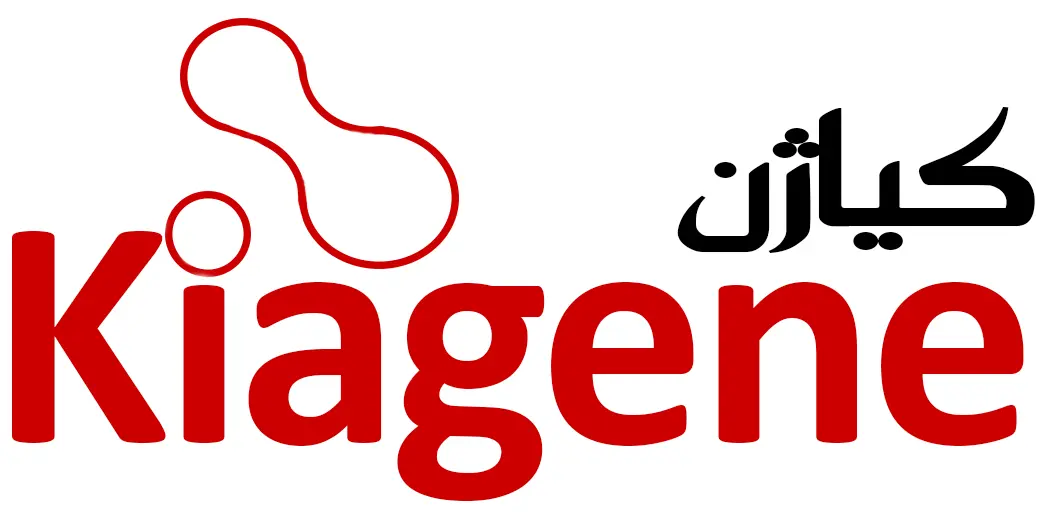
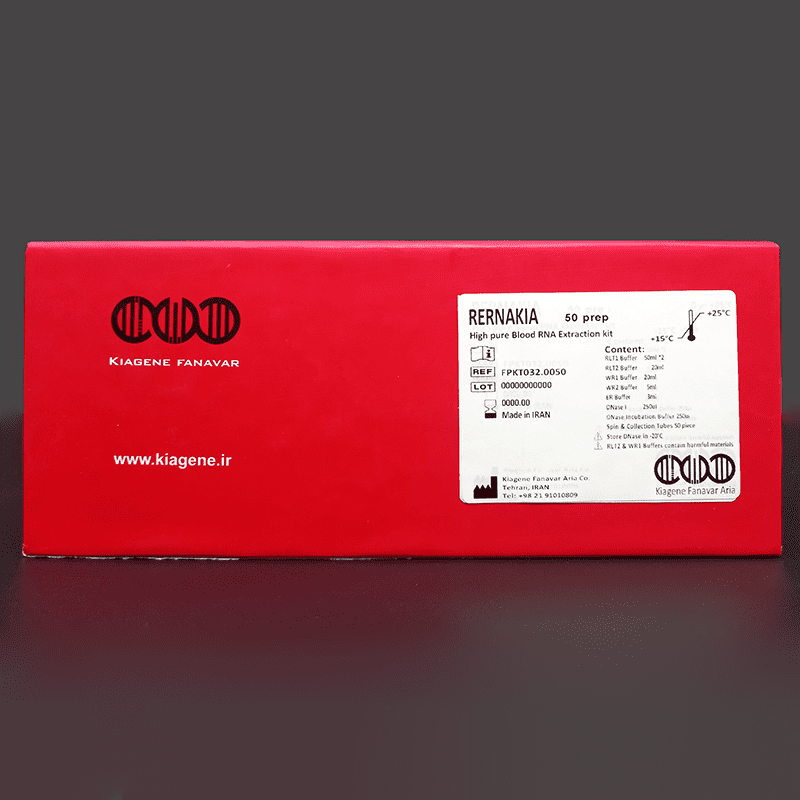



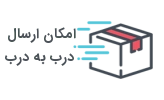




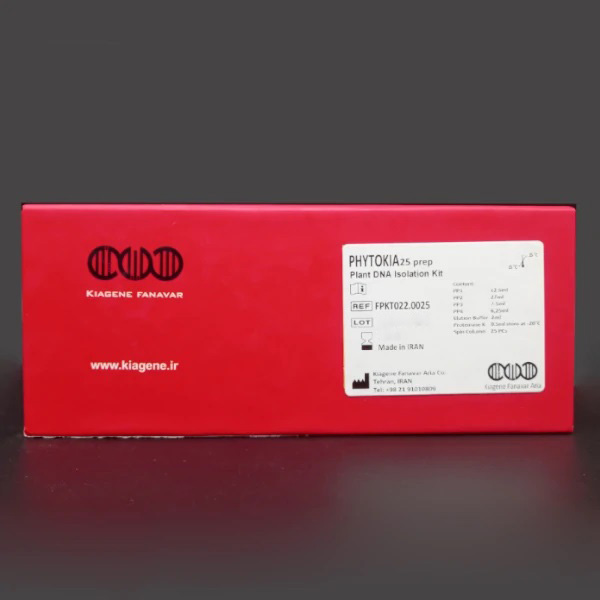
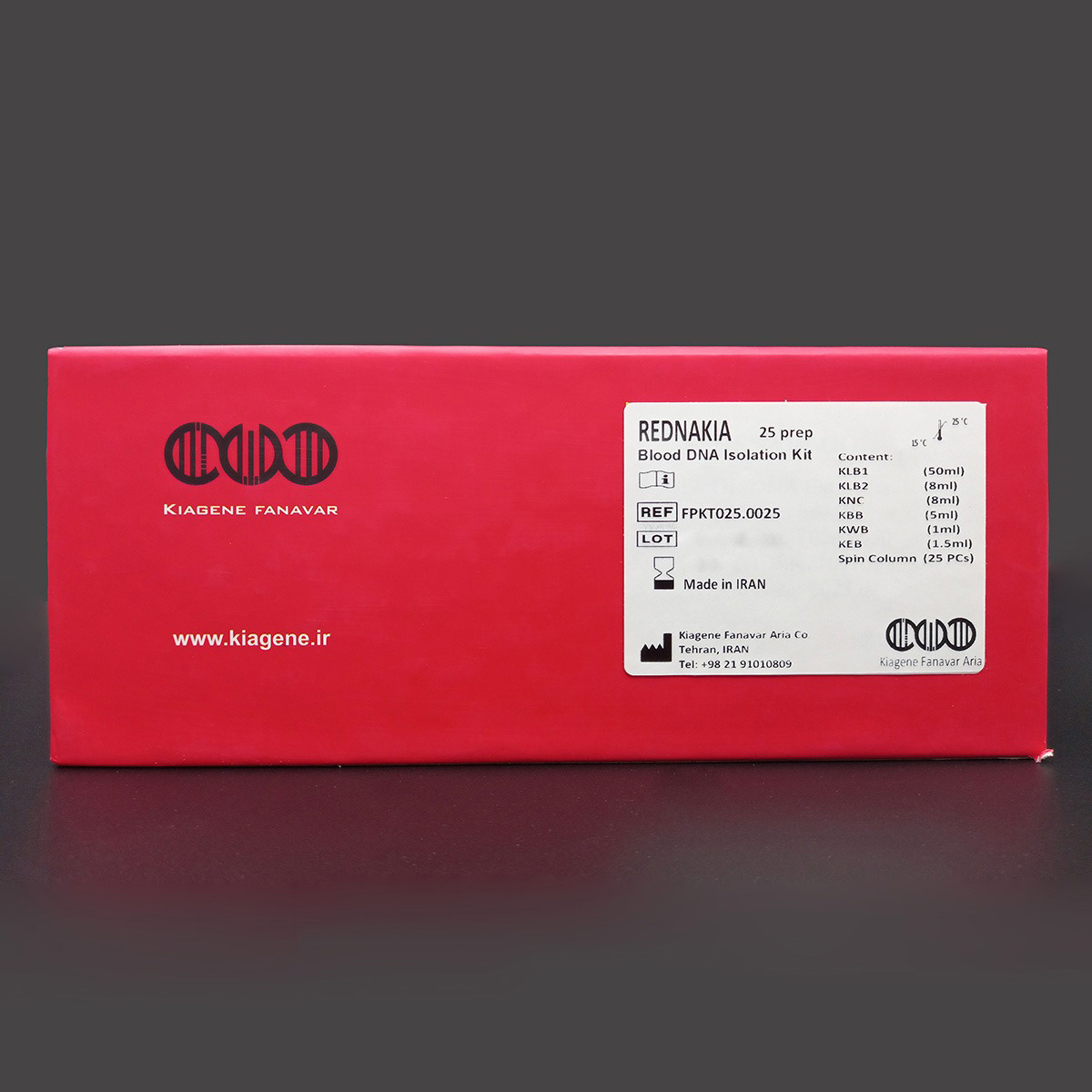
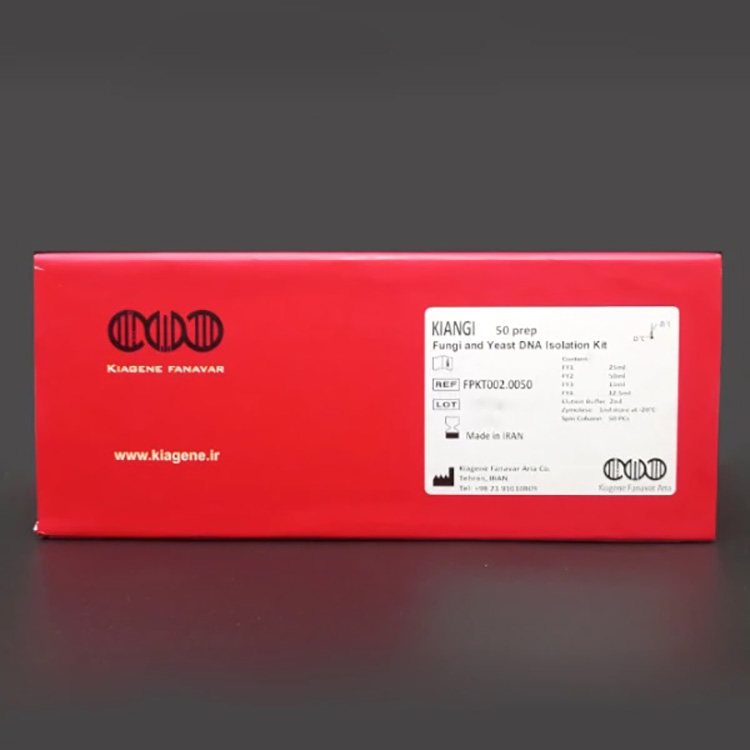
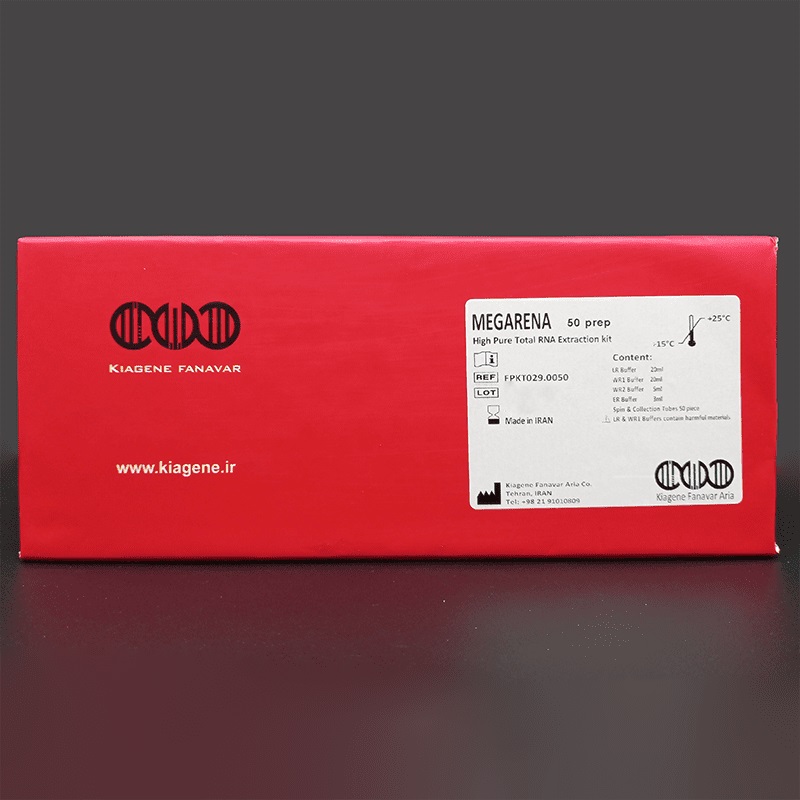

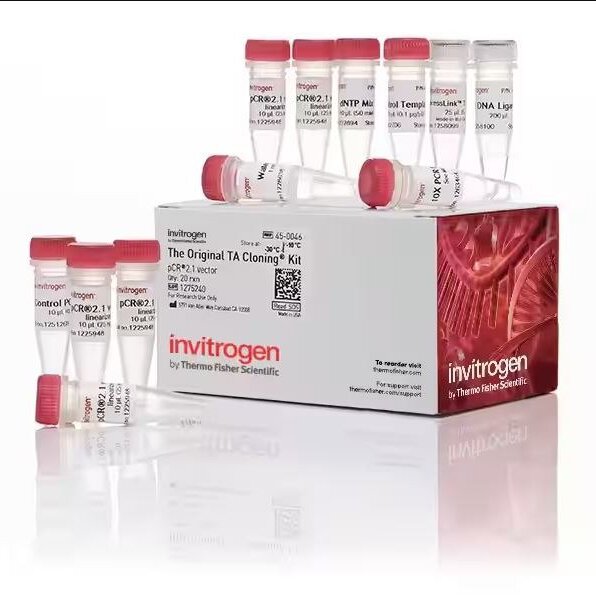


علی –
قیمت و کیفیت عالی
پرند –
در مقایسه قیمت با سایر شرکت ها بسیار عالی و مناسب تست، با تشکر